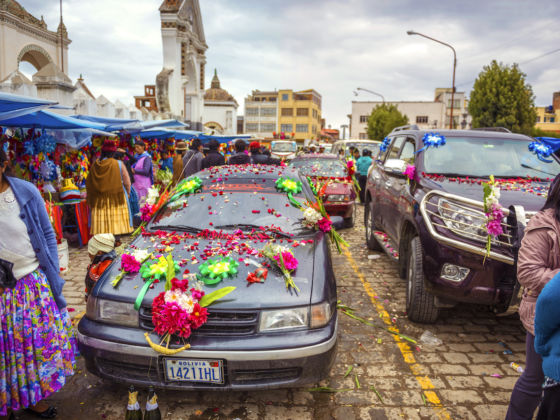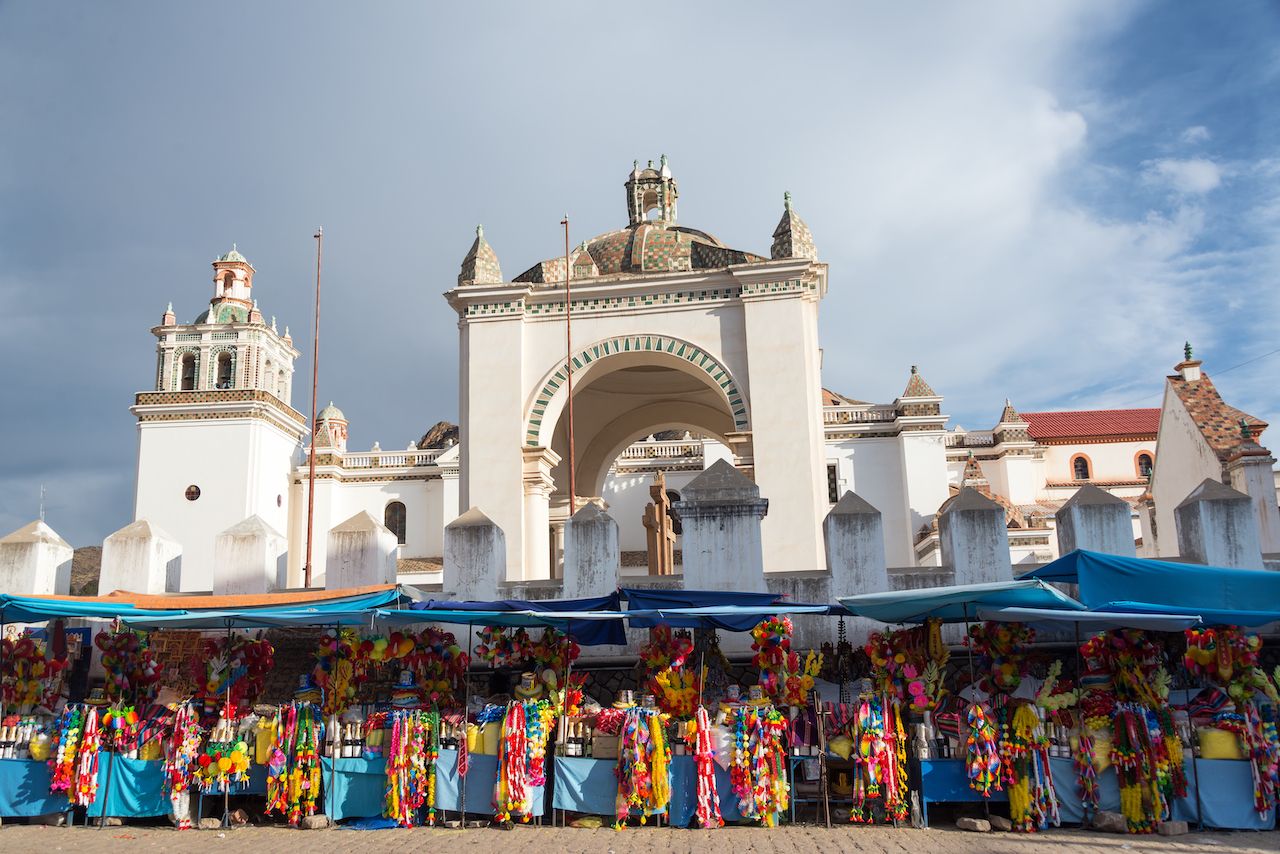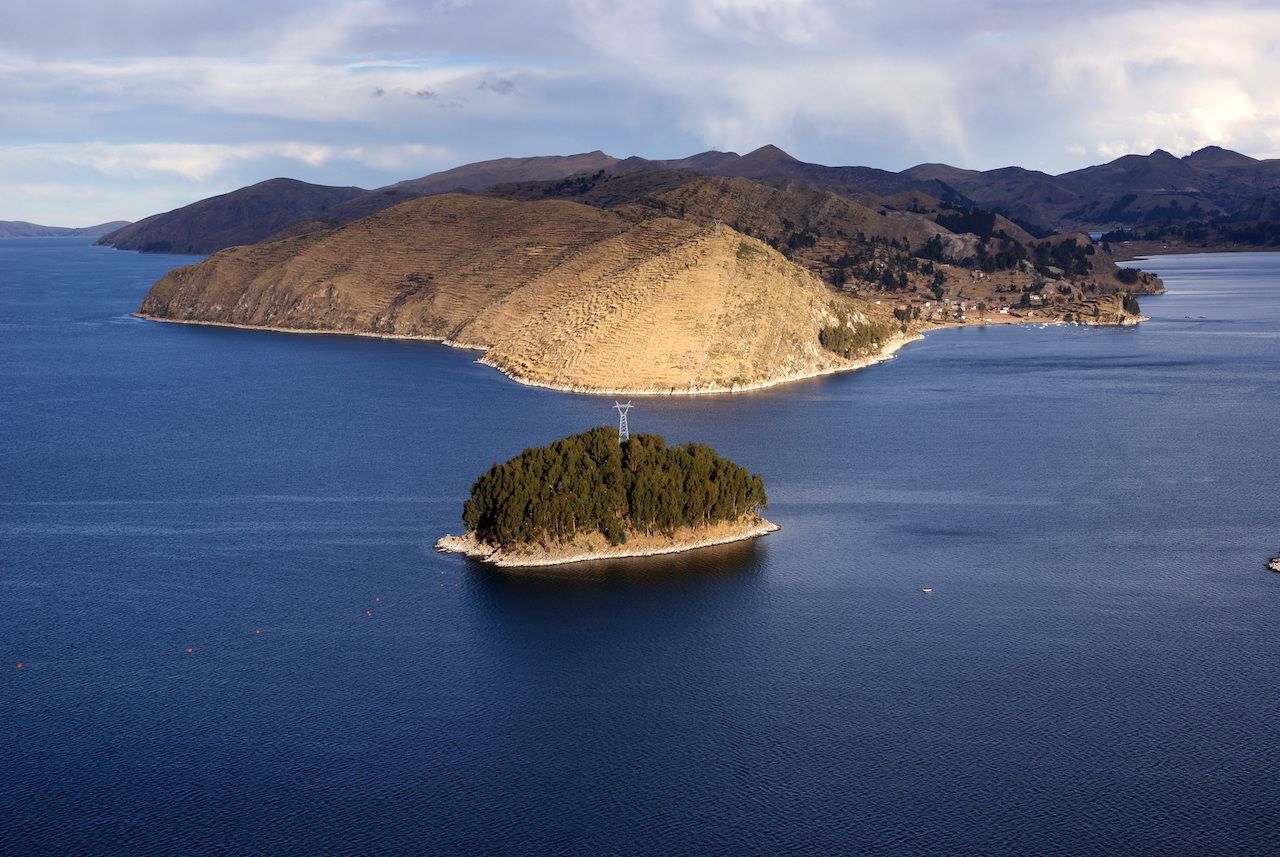Families dressed in their Sunday best pop Champagne beside cars speckled with pom-poms. Outsiders would think a wedding is taking place. Until a white-robed priest — dodging firecrackers — starts to fling water from plastic flowers under the car’s hood.
In Copacabana, Bolivia, this dance of pyrotechnics and holy men is part of a weekly tradition. The town is a hot spot for an uncommon Catholic ritual: car blessings.
In a highway pilgrimage, thousands drive into Copacabana to drive out blessed every year. Some road trip from as far as Columbia or Brazil in hopes of gaining a bit of divine car insurance in this town known for miracles.



